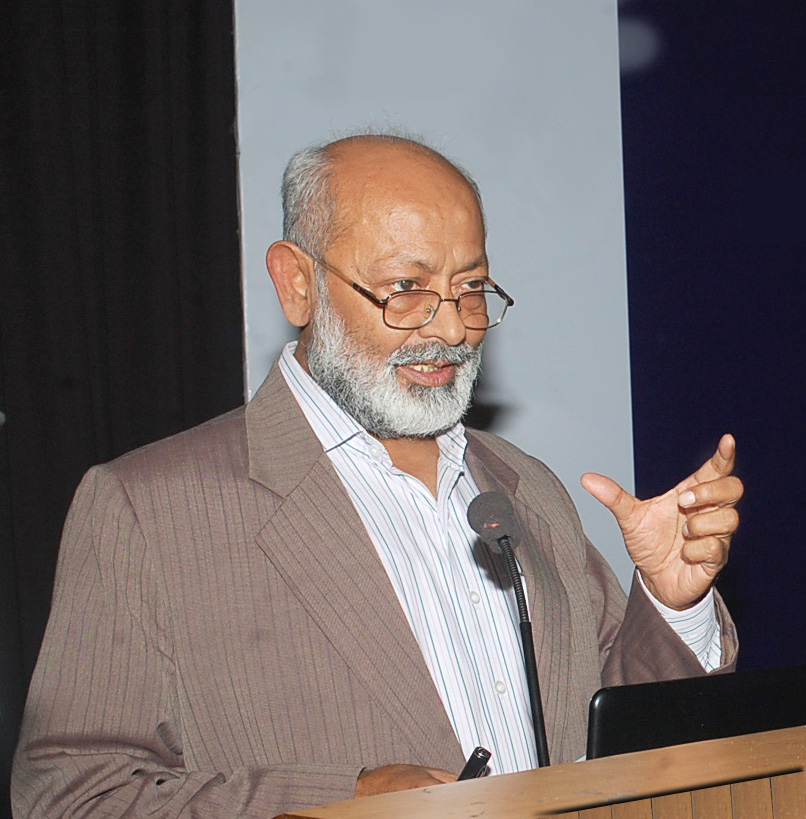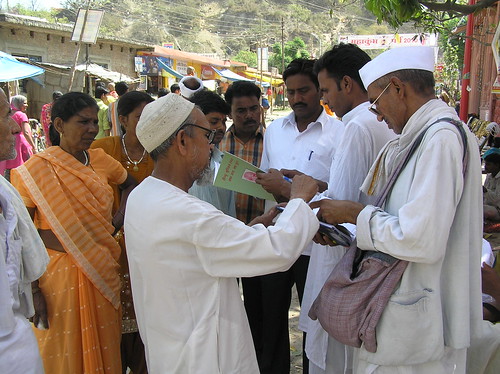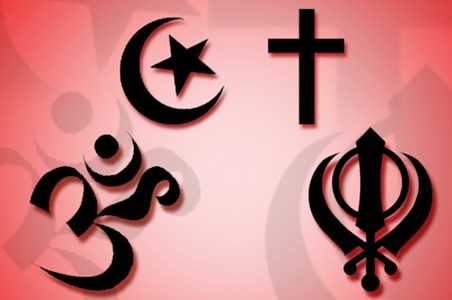Rapid industrialization and urbanization coupled with continuous decline in per capita availability of water is putting a lot of pressure on the available water resources in the country. As per report of standing sub-committee for assessment of availability and requirements of water for diverse uses in the country, the future water requirements for meeting the demands of various sections in the country for the year 2025 and 2050 have been estimated to be 1093 BCM and 1447 BCM respectively. The increasing gap between water availability and demand highlight the need for conservation of water. The National Water Policy also lays stress on conservation of water. It has been stipulated that efficiency of utilization in all the diverse uses of water should be optimized and an awareness of water as a scarce resource should be fostered.
With per capita availability of water depleting at a faster pace, the Government has declared the Year 2013 as Water Conservation Year under which awareness programmes are being launched among masses, especially children, on water conservation.
Water conservation is also the key objective of the National Water Mission which is one of the eight National Missions under the National Action Plan for Climate Change. This envisages conservation, minimising wastage and ensuring equitable distribution of water resources across and within states through integrated water resources development and management.
There is a need for water conservation, not only to restore the fast deteriorating eco-system of the country but also to meet the inevitable emergency of shortage even for drinking and domestic water in near future. The following points are to be pondered upon to plan strategies to meet the crisis:
· Water is a finite resource and cannot be replaced/duplicated.
· Water resources are theoretically ‘renewable’ through hydrological cycle. However, what is renewable is only the quantity, but pollution, contamination, climate change, temporal and seasonal variations have affected the water quality and reduced the amount of ‘usable water’.
· Only 2.7% of the water on earth is fresh.
· The ground water levels are declining very fast.
· Rainfall is unevenly distributed over time and space.
· Increased demand in coastal areas is threatening the fresh water aquifers with seawater intrusion.
· In inland saline areas, the fresh water is becoming saline due to excessive withdrawal of ground water.
· Water conservation practices in urban areas can reduce the demand as much as by one third, in addition to minimizing pollution of surface and ground water resources.
· Watershed programmes tended to concentrate on harvesting rainwater through surface structures.
· There is a need to look at surface and ground water holistically and prepare a conjunctive use plan.
Action Plan for Water Conservation
Conservation of Surface Water Resources
All efforts should be made to fully utilize the monsoon runoff and store rainwater at all probable storage sites. In addition to creating new storages, it is essential to renovate the existing tanks and water bodies by de-silting and repairs. The revival of traditional water storage techniques and structures should also be given due priority.
Conservation of Ground Water Resources
Ground water is an important component of hydrological cycle. It supports the springs in hilly regions and the river flow of all peninsular rivers during the non-monsoon period. For sustainability of ground water resources it is necessary to arrest the ground water outflows by a) Construction of sub-surface dams, b) Watershed management, c) Treatment of upstream areas for development of springs, and d) Skimming of freshwater outflows in coastal areas and islands.
Protection of Water Quality
The rapid increase in the density of human population in certain pockets of the country as a result of urbanization and industrialization is making adverse impact on the quality of both surface and ground water resources. Demand for water is increasing on one hand and on the other hand the quantity of ‘utilizable water resources’ is decreasing due to human intervention in the form of pollution and/or contamination of fresh water. Thus the protection of existing surface and ground water resources from pollution and contamination is a very vital component of water conservation.
Action Points for Water Conservation
An important component of water conservation involves minimizing water losses, prevention of water wastage and increasing efficiency in water use. The action points towards water conservation in different sectors of water use are as follows:
Irrigation Sector
Important action points towards water conservation in the irrigation sector are as follows:
· Performance improvement of irrigation system and water utilization;
· Proper and timely system maintenance;
· Rehabilitation and restoration of damaged /and silted canal systems to enable them to carry designed discharge;
· Selective lining of canal and distribution systems, on techno-economic consideration, to reduce seepage losses;
· Restoration / provision of appropriate control structures in the canal system with efficient and reliable mechanism;
· Conjunctive use of surface and ground water to be resorted to, specially in the areas where there is threat to water logging;
· Adopting drip and sprinkler systems of irrigation for crops, where such systems are suitable;
· Adopting low cost innovative water saving technology;
· Renovation and modernization of existing irrigation systems;
· Preparation of a realistic and scientific system operation plan keeping in view the availability of water and crop water requirements;
· Execution of operation plan with reliable and adequate water measuring structures.
· Revision of cropping pattern in the event of change in water availability;
· Utilisation of return flow of irrigation water through appropriate planning;
· Imparting trainings to farmers about consequences of using excess water for irrigation;
· Rationalization of water rate to make the system self-sustainable;
· Formation of Water Users Associations and transfer of management to them;
· Promoting multiple use of water;
· Introducing night irrigation practice to minimize evaporation loss;
· In arid regions crops having longer root such as linseed, berseem, lucerne guar, gini grass, etc may be grown as they can sustain in dry hot weather;
· Assuring timely and optimum irrigation for minimizing water loss and water-logging;
· Introducing rotational cropping pattern for balancing fertility of soil and natural control of pests;
· Modern effective and reliable communication systems may be installed at all strategic locations in the irrigation command and mobile communication systems may also be provided to personnel involved with running and maintenance of systems. Such an arrangement will help in quick transmission of messages and this in turn will help in great deal in effecting saving of water by way of taking timely action in plugging canal breaches, undertaking repair of systems and also in canal operation particularly when water supply is needed to be stopped due to sudden adequate rainfall in the particular areas of the command.
· With a view to control over irrigation to the fields on account of un-gated water delivery systems, all important outlets should be equipped with flow control mechanism to optimize irrigation water supply.
· As far as possible with a view to make best use of soil nutrients and water holding capacity of soils, mixed cropping such as cotton with groundnut, sugarcane with black gram or green gram or soyabean may be practised.
· It has been experienced that with scientific use of mulching in irrigated agriculture, moisture retention capacity of soil can be increased to the extent of 50 per cent and this in turn may increase yield up to 75 per cent.
Domestic and Municipal Sector
Important action points for water conservation in domestic and municipal sector are as follows:
· Action towards reduction of losses in conveyance;
· Management of supply through proper meter as per rational demand;
· Intermittent domestic water supply may be adopted to check its wasteful use.
· Realization of appropriate water charges so that the system can be sustainable and wastage is reduced;
· Creation of awareness to make attitudinal changes;
· Evolving norms for water use for various activities and designing of optimum water supply system accordingly;
· Modification in design of accessories such as flushing system, tap etc. to reduce water requirement to optimal level. Wherever necessary, BIS code may be revised;
· Possibility for recycling and reuse of water for purposes like gardening, flushing to toilets, etc. may be explored. Wastewater of certain categories can be reused for other activities as per feasibility;
· Optimum quantity of water required for waste disposal to be worked out;
· In public buildings the taps etc. can be fitted with sensors to reduce water losses;
Industrial Sector
Important action points for water conservation in industrial sector are as follows:
· Setting-up of norms for water budgeting;
· Modernization of industrial process to reduce water requirement;
· Recycling water with a re-circulating cooling system can greatly reduce water use by using the same water to perform several cooling operations;
· Three cooling water conservation approaches are evaporative cooling, ozonation and air heat exchange. The ozonation cooling water approach can result in a five-fold reduction in blow down when compared to traditional chemical treatment and should be considered as an option for increasing water savings in a cooling tower.
· The use of de-ionized water in reusing can be reduced without affecting production quality by eliminating some plenum flushes, converting from a continuous flow to an intermittent flow system and improving control on the use.
· The reuse of de-ionized water may also be considered for other uses because it may still be better than supplied municipal water.
· The wastewater should be considered for use for gardening etc.
· Proper processing of effluents by industrial units to adhere to the norms for disposal;
· Rational pricing of industrial water requirement to ensure consciousness / action for adopting water saving technologies;
Regulatory Mechanism for Water Conservation
Ground water is an unregulated resource in the country with no price tag. The cost of construction of a ground water abstraction structure is the only investment. Unrestricted withdrawal in many areas has resulted in decline of ground water levels. Supply side management of water resources is very important for conserving this vital resource for a balanced use. An effective way is through energy pricing restriction on supply and providing incentives to help in conservation of water. Action plan, in this regard, may include the following:
· Rationalizing pricing policy of water in urban and rural areas. Industries should be discouraged to exploit ground water with high price slabs.
· Restriction on new construction of ground water structures in all the over exploited and dark blocks of the country;
· Metering of all ground water abstraction structures;
· Controlled supply of electricity and downsizing of pump capacity in rural areas;
· Regulating the water trading or selling;
· Providing incentives for adoption of rainwater harvesting;
· Modification in building bye-laws in urban areas to make it mandatory to adopt rainwater harvesting.
Water conservation is prime and challenging concern. Numerous types of water conservation techniques are available in the country. The scientists are developing new techniques, but there are gaps on the application of the appropriate technologies, which needs to be removed. Due to lack of proper operation and maintenance in irrigation, industry and domestic water distribution system, there is huge loss of water. Hence emphasis should be given to improve the O&M system.
For developing the water resources, age-old traditional water conservation methods need to be judiciously adopted in conjunction with the latest modern conservation technology. Keeping this in view, rain water harvesting, revival of traditional water storages/ponds, check dams and other similar structures need to be adopted. Building byelaws should be suitably modified to introduce mandatory roof top rain water harvesting.
In order to conserve precious fresh water, recycling of waste water may be incorporated wherever feasible. Dual water supply system, one for treated wastewater and the other for fresh water may be introduced so that treated waste water can be used for secondary purposes such as toilets flushing, gardening, agriculture and selective industries etc. New urban colonies, big hotels industries and other similar establishments should have mandatory dual water supply systems.
Cropping pattern and crops water requirement varies from time to time due to the dynamic socio-economic condition of the people and the region in addition to geo-morphological, climatic and metrological changes. Hence, for effective management, appropriate base line data for water demand under different situations needs to be brought out for optimum crop water management and field activities considering effective rainfall in different physiological stages.
Night irrigation practice may be introduced to minimize evaporation loss thus conserving irrigation water. Timely and need based irrigation should be done to minimize loss of water. Further, for boosting productivity, rotational cropping pattern may be introduced for balancing fertility of soil and natural pest control.
Various water savings devices are being developed under various ongoing R&D programmes. These devices should be suitably adopted in the system.
Mass awareness campaign should be conducted regularly to cover all stakeholders, including service providers and consumers, for water conservation in irrigation, domestic and industrial sectors. Special attention must be given so that the fruits of the campaign must reach the children, housewives and farmers effectively.
(PIB Features.)
******







